| Vintage Pulp | Jan 13 2013 |

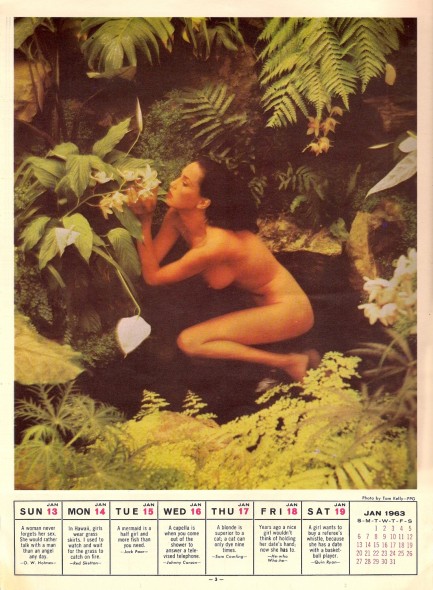
Above, the latest page of the Goodtime Weekly Calendar of 1963, with a Tom Kelley image of a model that is unknown to us. This is Kelley's fourth page in the calendar, and you can see his others by clicking his keyword below.
Jan 19: “A girl wants to buy a referee’s whistle, because she has a date with a basketball player.”—Quin Ryan
| Vintage Pulp | May 1 2012 |

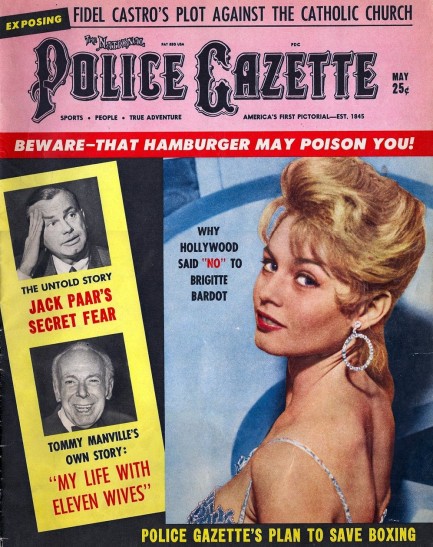
The National Police Gazette reveals on this cover from today in 1960 that Hollywood said no to Brigitte Bardot. The accompanying story quotes an unnamed independent producer, who says that the problem is that Bardot's deficient acting skills limited her to sex kitten roles, but American censorship meant Hollywood couldn't make those kinds of movies. He adds that, at $150,000 salary per project, Bardot is too expensive for Hollywood. A second “well-informed source” tells Gazette that studios are afraid of Bardot’s unbridled sexuality, claiming that her image is “so sexually devastating, that [Hollywood] quivers in fear before the slight, curvaceous French girl with the moist, pouted lips.” So, basically two of three reasons Police Gazette gives for Bardot not featuring in Hollywood films have to do with the influence of legions of American prudes. So maybe it wasn’t really a case of Hollywood saying no to Bardot as much as it was saying yes to sexual repressives. Bardot, it should be noted, simply continued on as the biggest star in the world. Elsewhere in this issue you get the plot-of-the-month attributed to Fidel Castro, tales of Adolf Hitler and Eva Braun, Jack Paar’s fears, and a nice portrait of Babe Ruth and Lou Gehrig. Scans of all that below, and more Gazette coming soon.
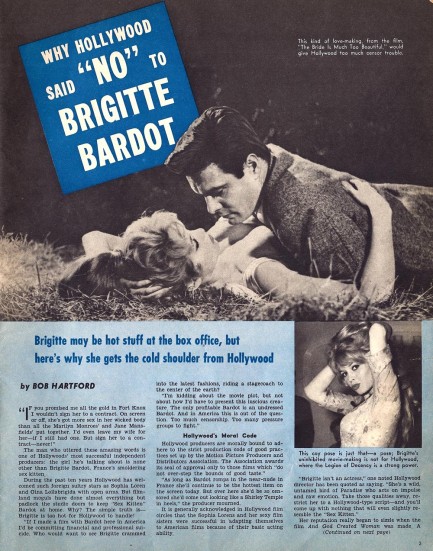
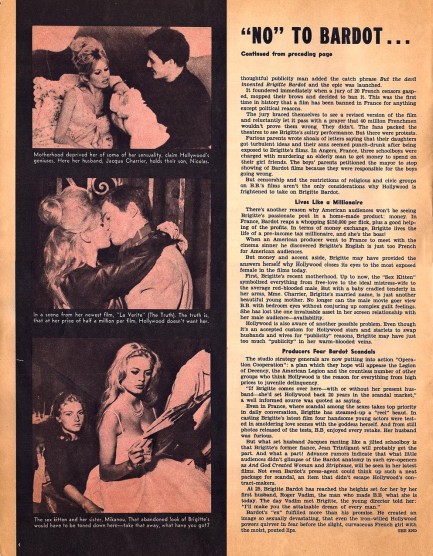
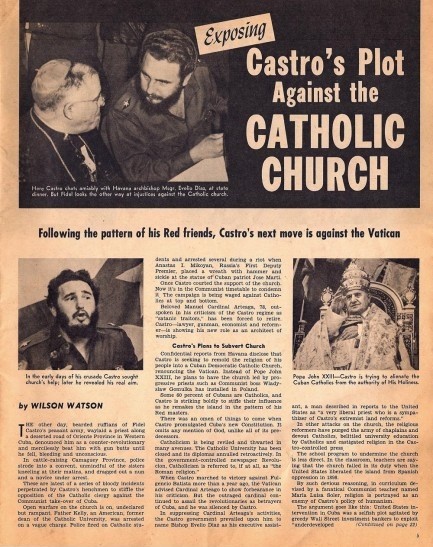
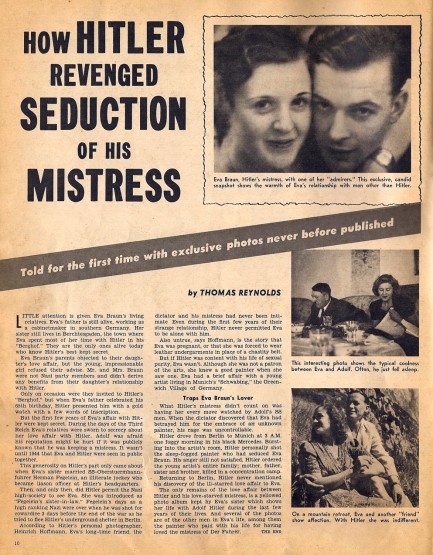
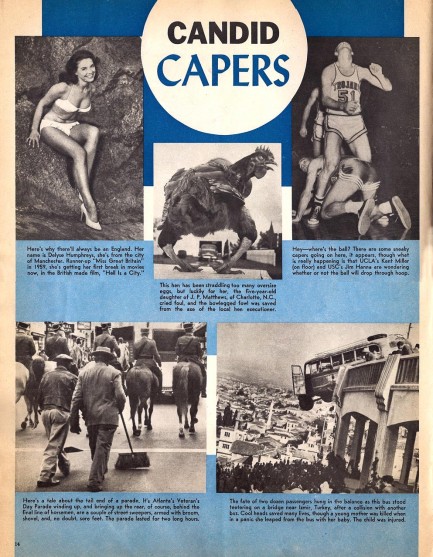
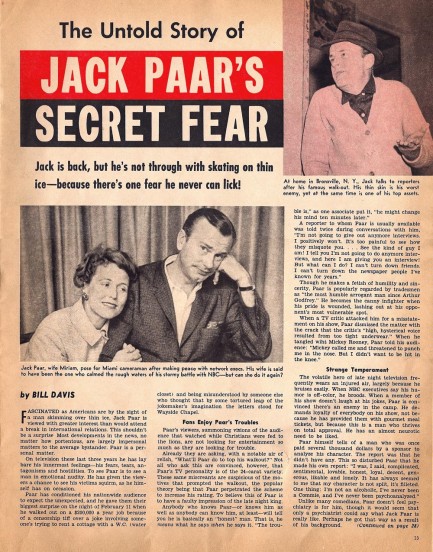
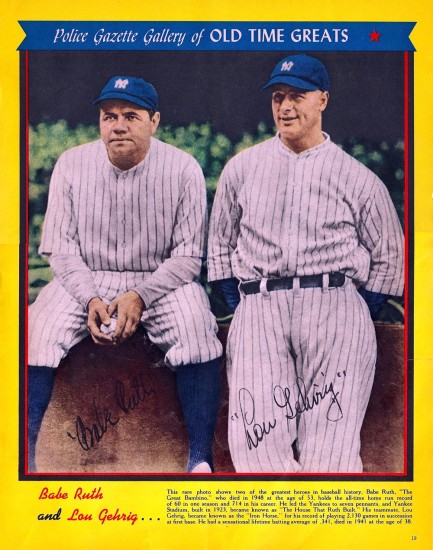
| Vintage Pulp | Jul 4 2011 |

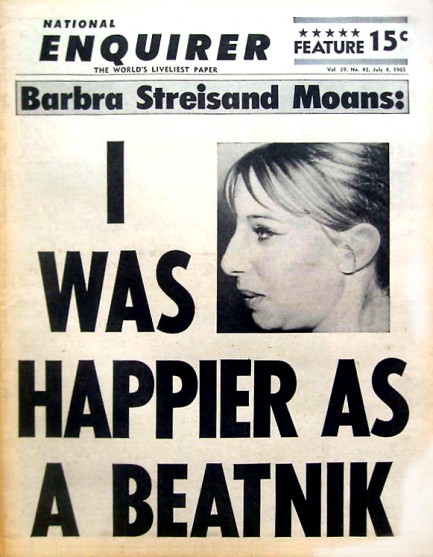
Above, a July 4 1965 issue of National Enquirer with Barbra Streisand on the cover and a lamentation inside on the hollowness of fame and fortune. Streisand was discovered singing in a Greenwich Village gay bar in 1960 and made her first appearance on television the next year on Jack Paar’s show. In 1964 she scored a Broadway hit playing Fanny Brice in the rags to riches musical Funny Girl, and her career took off from there. We don’t know if she ever actually claimed she was happier before her fame. If she did, all we can say is that into everyone’s life some rain must fall. And if that rain happens to be in the form of millions and millions of dollars, well, you just have to deal.
| Hollywoodland | Jul 6 2009 |

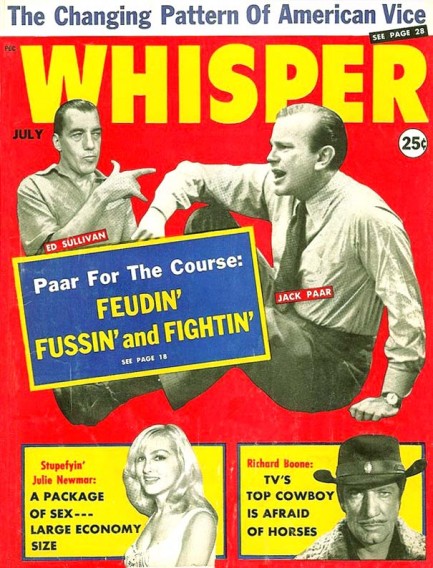
Above you see a Whisper magazine cover from July 1961. We mentioned in our previous post on this tabloid that it was published by Confidential owner Robert Harrison, and here you see a more typical visual motif, pretty much duplicating the Confidential style. The tabloid formula always calls for a little sex (which you get in the person of Julie Newmar), a little crime (which you see in the banner about vice), and a little absurdity (Richard Boone the television cowboy is afraid of horses). Those three stories are self-explanatory, so we won’t bother to elaborate, but the centerpiece item about a feud between Jack Paar and Ed Sullivan may require a bit of explanation.
Everyone knows who Ed Sullivan was, but Paar is less famous these days. However it was Paar who really established the modern blueprint of late night talk shows, taking over a Tonight Show that was floundering, and within a year turning it into such a hit that it was renamed The Jack Paar Tonight Show. But there was a flipside to his brilliance—he was an emotional man who shot from the hip and dealt with the consequences later. Once, when one of his jokes was cut, he waited until the next night, replaced his monologue with a verbal broadside at the network, and walked off the show, leaving his astonished announcer Hugh Downs to finish the taping. It wasn’t the first or last time Paar did something shocking—he often cried on air. When you consider that Ed Sullivan was an emotionally distant figure known as “old stone face,” it’s clear he and Paar were probably destined to hate each other—if for no other reason than their diametrically opposed personalities.
Part of the Paar-Sullivan feud revolved around the Beatles. In January 1964 on his show The Jack Paar Program, Paar featured the Fab Four in a series of film clips leased form the BBC. When Sullivan had the real-life Beatles on his program later that year people forgot that 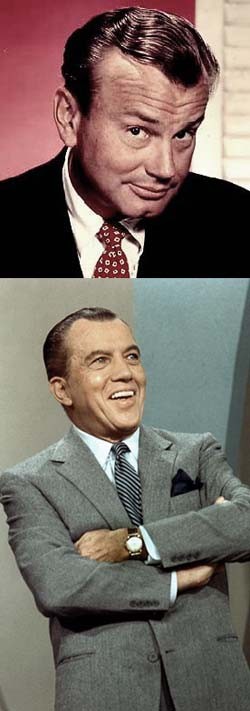 Paar had ever broadcast Beatles clips and Sullivan became the man who introduced the band to America. Paar believed this was blatant revisionism, but here his vanity kept him from understanding the obvious truth that film clips are nothing compared to a live performance. Besides, Paar didn’t like the Beatles’ music, and had used the film clips to joke about the band. It was only after they became a phenomenon that he publicly sought to usurp Sullivan’s credit.
Paar had ever broadcast Beatles clips and Sullivan became the man who introduced the band to America. Paar believed this was blatant revisionism, but here his vanity kept him from understanding the obvious truth that film clips are nothing compared to a live performance. Besides, Paar didn’t like the Beatles’ music, and had used the film clips to joke about the band. It was only after they became a phenomenon that he publicly sought to usurp Sullivan’s credit.
There were other occasions when the feud spilled into the open. For instance, Sullivan’s guests received several thousand dollars for their appearances, but Paar’s got a measly $320. He fought his network to try and change that, word got to the tabloids, and the tabs spun it as yet more personal animus between the two hosts, when in this case it could be argued Paar was standing up for his guests and the reputation of his show. But there was no doubt Paar and Sullivan hated each other. They were even talked into having a public debate, but it fell apart. At first, word was Sullivan had backed out, but a bit later CBS exec Douglas Edwards said it was actually Paar who had gotten cold feet. The news set Paar off. He spent nearly fifty minutes of The Tonight Show trashing Ed Sullivan. He began by facetiously describing his rival as a man who was “as honest as he is talented,” and ended by flatly calling him a liar.
The Paar-Sullivan rivalry only lost its steam when Parr retired, and Sullivan’s show declined and was finally axed June 6, 1971. Parr made a brief comeback in 1973, but quit for good shorty thereafter. None of us at Pulp Intl. are old enough to have seen the Paar-Sullivan blood feud, but there's plenty of text about it on the web to give a sense of what it was like. When we try to think of a comparable modern day dust-up between two relevant, powerful, and brilliant personalities we come up blank—and don't even try to put O’Donnell-Limbaugh in the same class. The Paar-Sullivan feud was a clash of beloved titans who, even in the midst of their battles, tried to entertain, educate, and elevate their audiences. American television hasn’t been the same since.




































































